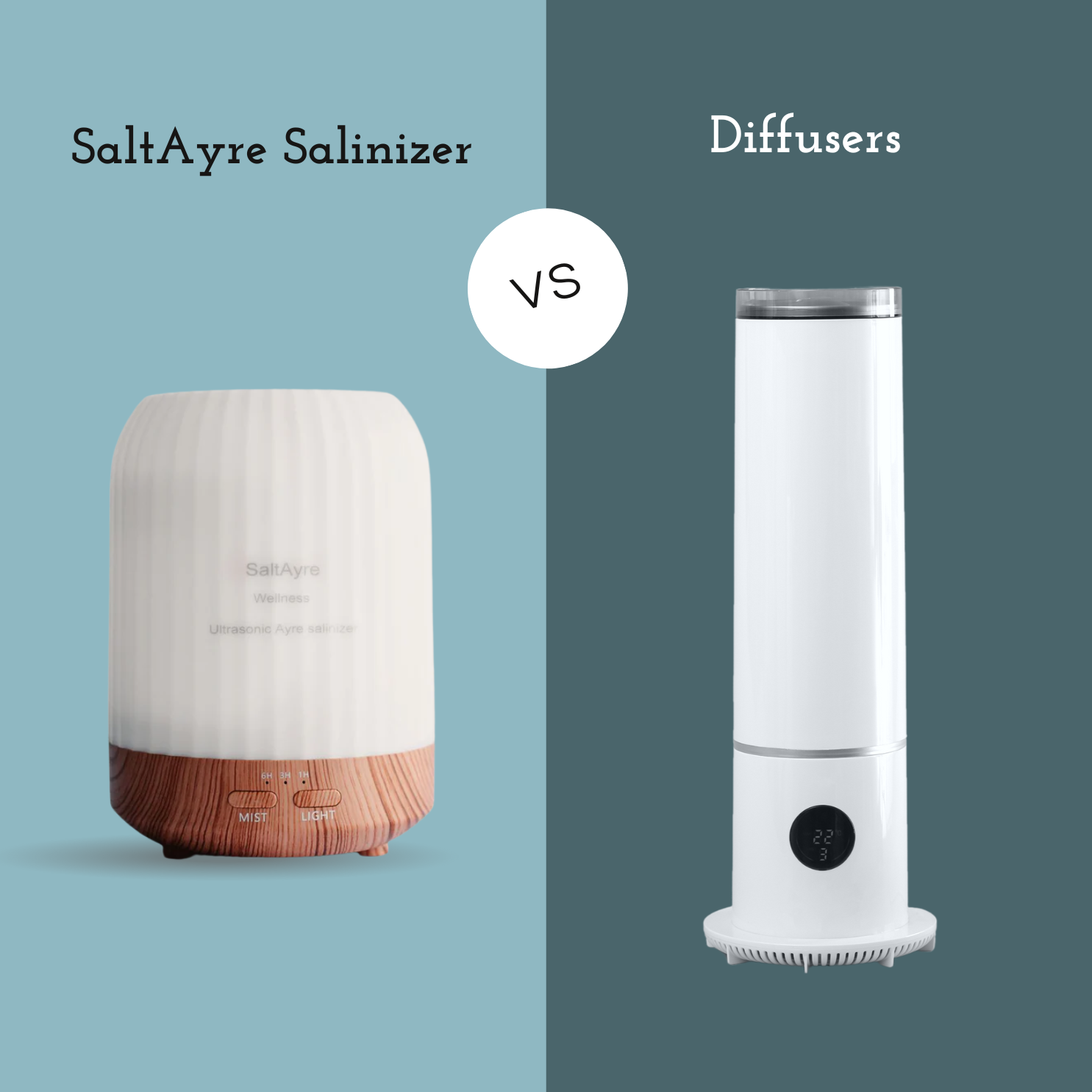At first glance, halotherapy devices and humidifiers might appear to do the same thing — release mist into the air and make breathing feel a little easier.
But look closer, and you’ll find two entirely different worlds of wellness.
If you’ve ever wondered why people speak of salt therapy with such calm conviction — or whether it’s really any different from that sleek humidifier sitting in your living room — this one’s for you.
The Humidifier: Comfort for Dry Air
Let’s start with what most of us already know.
A humidifier adds moisture to the air — nothing more, nothing less. It’s particularly helpful during the colder months, when heating systems leave indoor air parched.
Dry air can cause sore throats, cracked lips, and even itchy skin, so a touch of humidity makes your home far more comfortable.
In essence, it’s a comfort device, not a therapy.
Think of it as the equivalent of a warm blanket — soothing, yes, but not transformative.
Halotherapy: Healing in Every Breath
Halotherapy, on the other hand, takes inspiration from something much older and far more profound — the salt caves of Europe, where people noticed their breathing improved simply by spending time in those mineral-rich chambers.
The principle is simple but elegant:
When microscopic particles of pure salt enter the air, they carry with them natural antibacterial and anti-inflammatory properties.
As you inhale them, they reach the respiratory tract, helping to clear mucus, reduce irritation, and promote easier, deeper breathing.
This isn’t just moisture; it’s micro-mineral therapy.
And that’s where the real distinction lies — humidifiers make air wetter; halotherapy makes it better.
The Science Behind the Calm
Studies have explored the benefits of inhaling aerosolised salt — showing potential improvements in asthma symptoms, allergy relief, and even stress regulation. The salt helps draw out impurities, balance airway moisture, and support the body’s natural healing mechanisms.
In simpler terms, while a humidifier changes how the air feels, halotherapy changes how the air works.
It’s the difference between softening the air and strengthening it.
Where SaltAyre® Fits In
The SaltAyre® Ultrasonic Home Salinizer takes this age-old therapy and translates it into something beautifully modern.
Using advanced ultrasonic technology, it disperses ultra-fine particles of Scottish sea salt into your air — quietly, elegantly, and without any of the noise or vapour associated with humidifiers.
You won’t see clouds of mist or condensation; you’ll simply feel the difference — clearer breathing, lighter air, and a calm that feels almost coastal.
It’s halotherapy, distilled and designed for contemporary living — no salt caves required.
When to Use Each
If your goal is simply to add moisture during dry seasons, a humidifier will do nicely.
But if you’re looking to support your wellbeing — clearer breathing, calmer sleep, and a sense of renewal — halotherapy offers something far more holistic.
In fact, many people use both. The humidifier keeps the air gentle on the skin, while salt therapy keeps it beneficial for the body.
Together, they create an atmosphere that feels balanced and deeply restorative.
A Breath of Clarity
Halotherapy isn’t about replacing technology; it’s about refining it.
It takes a principle rooted in nature and brings it indoors, quietly and effortlessly.
And that’s the beauty of it — no steam, no fanfare, just the gentle rhythm of air doing what it was always meant to do: heal, soothe, and restore.
So the next time someone asks you what the difference is between halotherapy and a humidifier, you’ll know exactly what to say —
“One adds moisture. The other adds meaning.”




Leave a comment
This site is protected by hCaptcha and the hCaptcha Privacy Policy and Terms of Service apply.